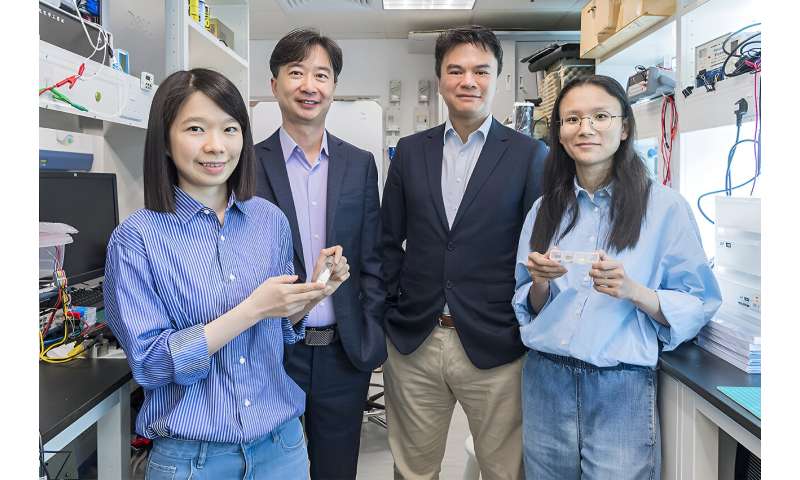A living passivator for perovskite solar cell stability has been developed by City University of Hong Kong researchers

The progress of solar energy technology took a step forward recently with the development of a groundbreaking living passivator at City University of Hong Kong (CityUHK) that can substantially enhance the stability and efficiency of perovskite solar cells.
This newly developed passivator is a type of corrosion inhibitor that appreciably changes the potential of a metal. The CityUHK technology leverages dynamic covalent bonds that activate on exposure to moisture and heat, enabling it to evolve new passivators in response to environmental factors.
This innovative approach allows for real-time repair and maintenance of perovskite solar cells. The coating mimics sustained-release capsules in drugs that continuously release chemicals to heal defects caused by environmental stressors like water and heat, making it a promising solution for next-generation perovskite photovoltaics.
The team's research was recently published in the prestigious scientific journal Nature paper under the title "Water- and heat-activated dynamic passivation for perovskite photovoltaics".
The project is led by Professor Feng Shien-ping, Professor in the Department of Systems Engineering and Associate Dean in the College of Engineering at CityUHK, in collaboration with Professor Henry J. Snaith at the University of Oxford and Professor Angus Yip Hin-lap, Associate Director of the Hong Kong Institute for Clean Energy at CityUHK,
Perovskite solar cells are known for their impressive ability to convert sunlight into electricity, making them a strong contender for the next generation of solar panels. However, concerns about their long-term storage and operational stability persist. Various passivation strategies have been developed to improve their performance and reliability, but as they are fixed in specific locations after manufacturing, addressing new defects caused by exposure to water and heat over time during operation presents a significant challenge.
In response, the CityUHK-led team has found through extensive experiments that the passivator significantly improves the performance and durability of perovskite solar cells. A photovoltaic conversion efficiency of over 25% has been recorded, and operational stability for more than 1,000 hours at high temperatures and in humid conditions has been maintained.
"Applying a living passivator on the perovskite surfaces enhances their resistance to environmental factors like moisture and heat. This improves the stability of perovskite solar cells in hot and humid conditions, introducing a dynamic, responsive approach to environmental stressors," explained Dr. Wang Weiting, the first author of this study and a Research Associate on Professor Feng's team.
Professor Feng added that the team noted how plants and other living beings could remain resilient to differing weather conditions while perovskite solar cells could deteriorate within months.
"The key difference lies in the ability of living organisms to regenerate and heal evolving defects. By incorporating a passivation mechanism that dynamically heals during operation, we can potentially unlock this regenerative concept for perovskite or other electronic devices," said Professor Feng.
The CityUHK-led team is collaborating with industry partners to apply this technology to ionic migration and instability in perovskite solar cells during the manufacturing and operation stages.
The team believes that making these solar cells more stable and reliable could help make them more commercially viable, adding that this technology could be used in other applications, such as anti-oxidation and interfacial contact engineering in microelectronic devices.
Professor Feng and Professor Henry J. Snaith are the paper's corresponding authors.
More information:
Wei-Ting Wang et al, Water- and heat-activated dynamic passivation for perovskite photovoltaics, Nature (2024). DOI: 10.1038/s41586-024-07705-5
Provided by City University of Hong Kong